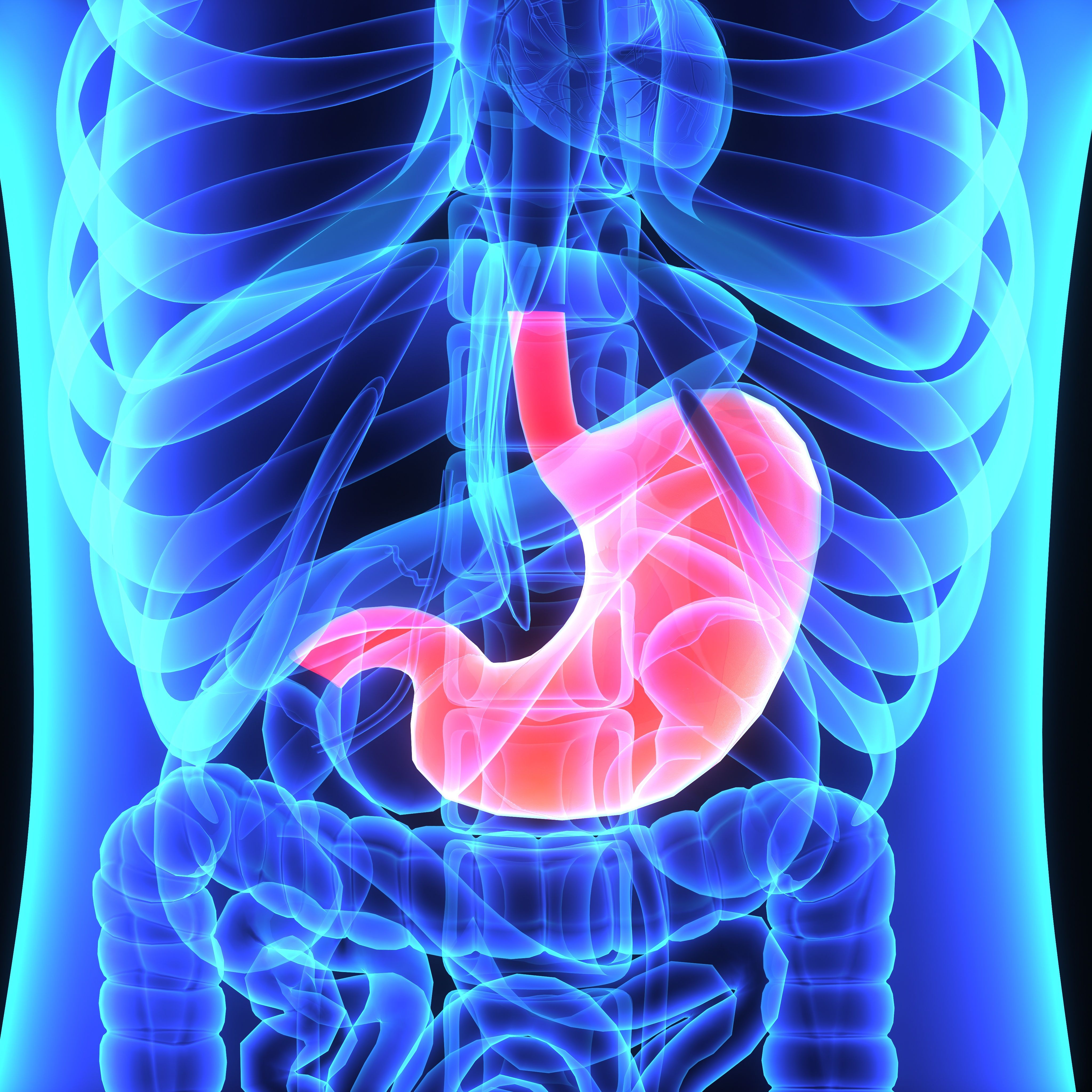Zolbetuximab/mFOLFOX6 Prolongs Survival in Locally Advanced Gastric Cancer
Patients with locally advanced unresectable or metastatic gastric or gastroesophageal junction adenocarcinoma may experience significant survival benefit following treatment with zolbetuximab.
Treatment with zolbetuximab (IMAB362) and modified folinic acid, fluorouracil, and oxaliplatin (mFOLFOX6) may represent a new standard of care in first-line CLDN18.2-positive, HER2-negative locally advanced unresectable or metastatic gastric or gastroesophageal junction (GEJ) adenocarcinoma, according to data from the phase 3 SPOTLIGHT trial (NCT03504397).
"Based on the results of SPOTLIGHT, zolbetuximab should be considered as an option for first-line therapy in combination with chemotherapy in patients with CLDN18.2-positive, HER2-negative, locally advanced unresectable or metastatic gastric or [GEJ] junction adenocarcinoma," according to the study authors.

The median follow-up for progression-free survival (PFS) was 12.94 months vs 12.65 in the zolbetuximab and placebo arms, respectively. Those in the zolbetuximab arm experienced a significant decrease in risk of disease progression or death vs the placebo arm (Hazard ratio [HR], 0.75; 95% CI, 0.60-0.94; P = .0066). The median PFS was 10.61 months (95% CI, 8.90-12.48) vs 8.67 months (95% CI, 8.21-10.28) in each respective arm.
The estimated 12-month PFS rate was 49% (95% CI, 42%-55%) in the zolbetuximab arm vs 35% (95% CI, 28%-42%) in the placebo arm; the estimated 24-month rates were 24% (95% CI, 17%-32%) and 15% (95% CI, 9%-22%), respectively.
“Based on the results of SPOTLIGHT, zolbetuximab should be considered as an option for first-line therapy in combination with chemotherapy in patients with CLDN18.2-positive, HER2-negative, locally advanced unresectable or metastatic gastric or [GEJ] junction adenocarcinoma,” the authors wrote. “Zolbetuximab is being tested in other studies in CLDN18.2-positive gastric and pancreatic adenocarcinomas.”
The global, randomized, placebo-controlled, double-blind study included patients from 215 centers across 20 countries. Patients eligible for enrollment were 18 years and over with CLDN18.2-positive disease, HER2-negative, previously untreated disease. Patients were also required to have an ECOG performance status of 0 or 1 and adequate organ function.
Patients who enrolled on the study received intravenous zolbetuximab at 800 mg/m2 on day 1 of cycle 1 and 600 mg/m2 on day 22 of cycle 1 along with 400 mg/m2 of folinic acid, 200 mg/m2 of levofolinate, 400 mg/m2 of fluorouracil bolus with a subsequent 2400 mg/m2 infusion, and 85 mg/m2 of oxaliplatin on days 1, 15, and 29; or placebo/mFOLFOX6.
The study's primary end point was PFS by RECIST 1.1 criteria, with key secondary endpoints including objective response rate (ORR), duration of response (DOR), and safety.
Of 2735 patients who were assessable for CLDN18.2 status, 38% met the cut-off for CLDN18.2 positivity. In total, 565 patients were randomly assigned to either the zolbetuximab arm (n = 283) or placebo arm (n = 282). Ninety-nine percent of patients received at least 1 dose of treatment. A total of 218 patients in the experimental arm and 232 in the control arm discontinued treatment; this was most frequently due to disease progression (48% vs 64%) in each respective arm.
Patients had a median age of 61 years and most presented with gastric adenocarcinoma (76%) followed by GEJ adenocarcinoma (24%). In the zolbetuximab and placebo arms, most patients were male (62%).
The median follow-up for overall survival (OS) was 22.14 months vs 20.93 months in the experimental and control arms, respectively. At the time of the interim analysis, 58% of patients had died. The median OS was 18.23 months (95% CI, 16.43-22.90) vs 15.54 months (95% CI, 13.47-16.53) in each respective arm. The estimated 12-month OS rate was 68% (95% CI, 61%-73%) in the zolbetuximab arm compared with 60% (95% CI, 54%-66%) in the placebo arm; the estimated 24-month rates were 39% (95% CI, 32%-46%) vs 28% (95% CI, 22%-35%), respectively.
Investigators reported that the survival benefit was observed across all prespecified patient subgroups.
The ORR was 48% (95% CI, 42%-54%) in both respective groups, with a median DOR of 9.00 months (95% CI, 6.87-10.25) in the zolbetuximab cohort and 8.05 months (95% CI, 6.47-10.81) in the placebo cohort.
Grade 3 or higher treatment-emergent adverse effects occurred in 87% of patients in the experimental cohort vs 78% of those in the placebo cohort. Frequent high-grade toxicities included nausea, vomiting, and decreased appetite.
Reference
Shitara K, Lordick F, Bang YJ, et al. Zolbetuximab plus mFOLFOX6 in patients with CLDN18.2-positive, HER2-negative, untreated, locally advanced unresectable or metastatic gastric or gastro-oesophageal junction adenocarcinoma (SPOTLIGHT): a multicentre, randomised, double-blind, phase 3 trial. Published online April 14, 2023. doi:10.1016/S0140-6736(23)00620-7